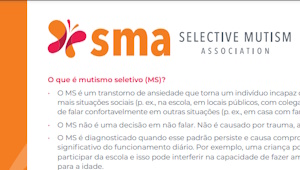Online Library
Parent Letter to Teacher of Student with Selective Mutism
How to Share Information About Your Child’s SM with Their Teacher
Teachers are typically confused by a student with selective mutism (SM). They often have not yet had a student with SM and don’t know what to do to help. Their efforts to make the child comfortable are sometimes counterproductive as they may default to asking yes/no questions, which leads the child with SM to continue nodding, instead of talking. Experience tells us that when teachers are given good techniques to use, they really appreciate it and the skills work. Depending on your own situation, you may be the one, as the parent, who will teach the skills to the teacher.
In any event, we encourage you to write a letter to the teacher like the one below. Feel free to take the one below and edit it to your liking. Personalize it to your child’s situation.
**********************************
Sample Letter
Dear [Teacher]:
Our child, [Child], has selective mutism (“SM”). Selective mutism is an anxiety disorder that makes it difficult to communicate verbally in many social situations. [Child] is able to speak comfortably with our family at home, but due to overwhelming anxiety, struggles to speak at school [or include any specifics about how SM presents for your child]. Because of [Child’s] diagnosis of SM, I am concerned that [Child] [include 1-2 sentences to reflect your child’s specific situation].
Selective Mutism is not shyness or oppositionality, and it’s not something that will change once [Child] is comfortable in the classroom. Children with selective mutism require specific interventions in the school setting to help them overcome their anxiety and ensure they are able to most effectively access the curriculum, learn new material, and participate in classroom activities. This includes working with a designated staff member or “key worker” who is able to encourage [Child’s] speech, support [Child] in “brave talking” practices at school, and facilitate communication among all team members and between school and home.
From working with [Child’s] current treating provider, the following recommendations would be a helpful place to start in supporting [Child] in your classroom:
- [include some bullet points for appropriate recommendations based on where your child is in treatment]
SM may be new to you (as it was recently to us!), and you may have questions. We are happy to help address what we can, and we’d also like to share some great resources about SM. First, the Selective Mutism Association (SMA) developed a great free toolkit for educators that can be found on the website: www.selectivemustism.org. There are many other free resources on the SMA website too, such as webinars, conferences, and a whole section of documents dedicated to increasing school communication. In addition, SMA has developed several online courses for educators to learn more about SM. These courses will teach you more about SM and how to work with [Child] in the classroom. There are courses for professional support staff (such as school psychologists/speech language pathologists/school counselors), as well as for elementary and secondary teachers. More information can be found here at www.selectivemutism.org/educators.
Please let us know how best to communicate with you regarding [Child’s] progress so we can work together to modify goals accordingly. We are optimistic that by working together in helping [Child], we can set [Child] up for success.
Thank you,




